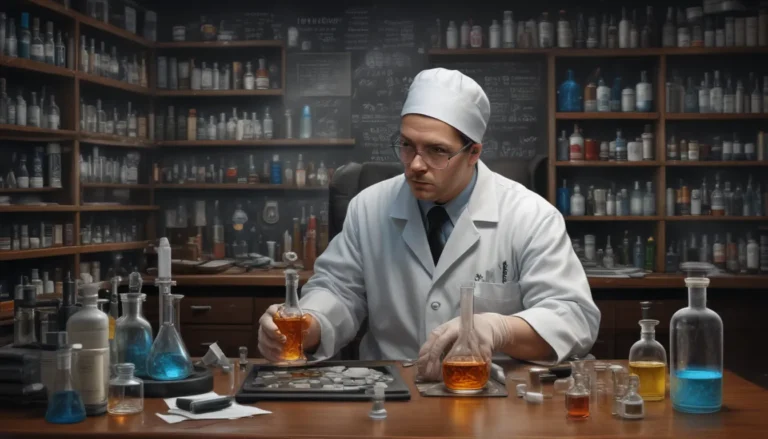A Note About Images: The images used in our articles are for illustration purposes only and may not exactly match the content. They are meant to engage readers, but the text should be relied upon for accurate information.
Chemistry enthusiasts, rejoice! First-order reactions are a captivating topic that sheds light on the rate at which chemical transformations occur. These reactions are not only essential in understanding kinetics but also play a vital role in various scientific fields. In this article, we will uncover 20 astonishing facts about first-order reactions, unraveling their unique characteristics and behaviors. Join us on this educational journey as we delve into the fascinating world of first-order reactions and discover what makes them so intriguing!
Key Takeaways:
- First-order reactions have a consistent rate of decay, making them predictable and crucial in understanding changes over time in chemistry.
- Understanding first-order reactions is essential for designing effective drugs and optimizing chemical processes, influencing everything from medication to everyday products.
First-Order Reactions: Unraveling the Basics
First-order reactions exhibit a unique characteristic where the rate of decay remains constant over time, regardless of the initial concentration. These reactions follow first-order kinetics, showcasing a linear relationship between the natural logarithm of the reactant concentration and time. The half-life of a first-order reaction is constant and independent of the initial reactant concentration, setting them apart from other reaction types.
The Significance of Rate Constants in First-Order Reactions
The rate constant in first-order reactions serves as a crucial parameter that determines the rate of decay. This unique characteristic allows scientists to predict the behavior of these reactions accurately. Temperature plays a vital role in influencing the rate constant, with increasing temperatures leading to an acceleration of the reaction rate. Additionally, the integrated rate law for first-order reactions provides a mathematical framework for understanding the relationship between reactant concentrations and time.
Real-World Applications of First-Order Reactions
First-order reactions are not just confined to the realm of laboratories and textbooks; they can be observed in everyday life. Processes like food spoilage and medication degradation often follow first-order decay patterns. Furthermore, catalysts can affect the rate of first-order reactions by providing alternative reaction pathways, ultimately influencing the reaction rate. These reactions are vital in chemical kinetics studies, offering valuable insights into reaction rates and mechanisms.
Delving Deeper into the World of First-Order Reactions
First-order reactions exhibit exponential decay patterns, with the concentration of the reactant decreasing exponentially over time as the reaction progresses. The activation energy of a reaction also plays a significant role in determining the rate constant and, consequently, the reaction rate. Understanding and manipulating first-order reactions are imperative for designing effective drugs and optimizing chemical processes, highlighting their importance in various scientific fields.
Conclusion: Unveiling the Mysteries of First-Order Reactions
In conclusion, first-order reactions offer a fascinating glimpse into the intricate world of chemical kinetics. By exploring the 20 astonishing facts about these reactions, we have gained valuable insights into their characteristics and behaviors. Whether in radioactive decay, drug design, or everyday processes, first-order reactions continue to captivate researchers and scientists worldwide. By harnessing the knowledge of first-order reactions, we can make accurate predictions, enhance efficiency, and optimize industrial processes in the world of chemistry and beyond.
FAQs: Navigating Through Common Queries
- Q: What is a first-order reaction?
A: A first-order reaction is a chemical reaction where the rate is directly proportional to the concentration of one reactant, following a first-order rate equation. - Q: How can you determine if a reaction follows first-order kinetics?
A: Plotting the natural logarithm of the reactant concentration against time can help determine if a reaction follows first-order kinetics. - Q: What is the half-life of a first-order reaction?
A: The half-life of a first-order reaction is the time taken for the reactant concentration to decrease to half its initial value and is independent of reactant concentration. - Q: Can a reaction be both first-order and second-order?
A: No, a reaction can only have one order, determined by the rate equation representing the relationship between reaction rate and reactant concentrations. - Q: Are all radioactive decay reactions considered first-order?
A: Yes, radioactive decay reactions follow characteristics of first-order reactions, including exponential decay and constant half-life.
Embark on an enriching journey through the realms of chemical kinetics and deepen your understanding of first-order reactions. By embracing these fundamental principles, you can unlock a world of scientific discoveries and innovations. Step into the captivating world of chemistry, where each reaction tells a story of transformation and progress. Join us in our quest for knowledge and exploration, as we navigate the wonders of chemistry and uncover the mysteries that shape our world!






